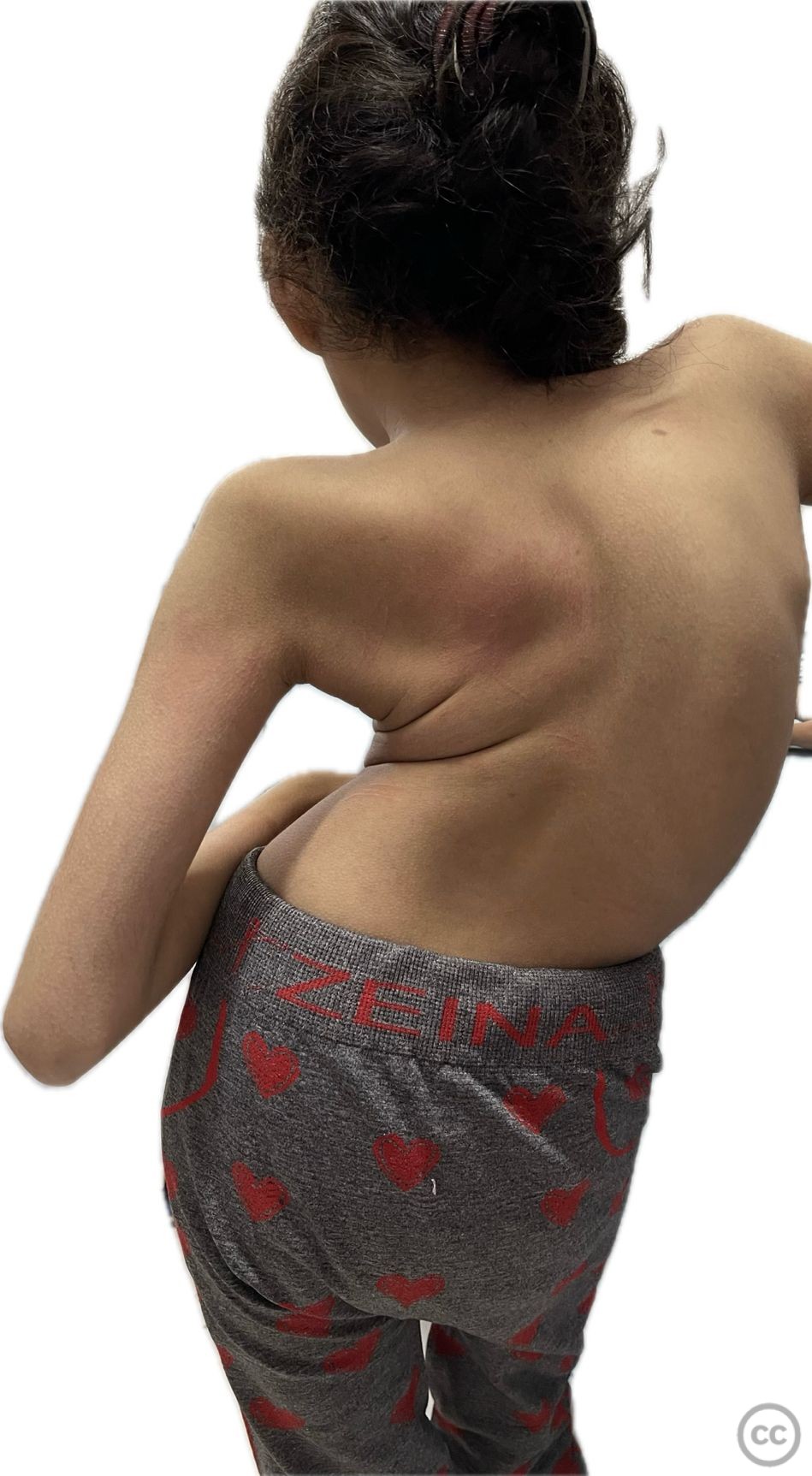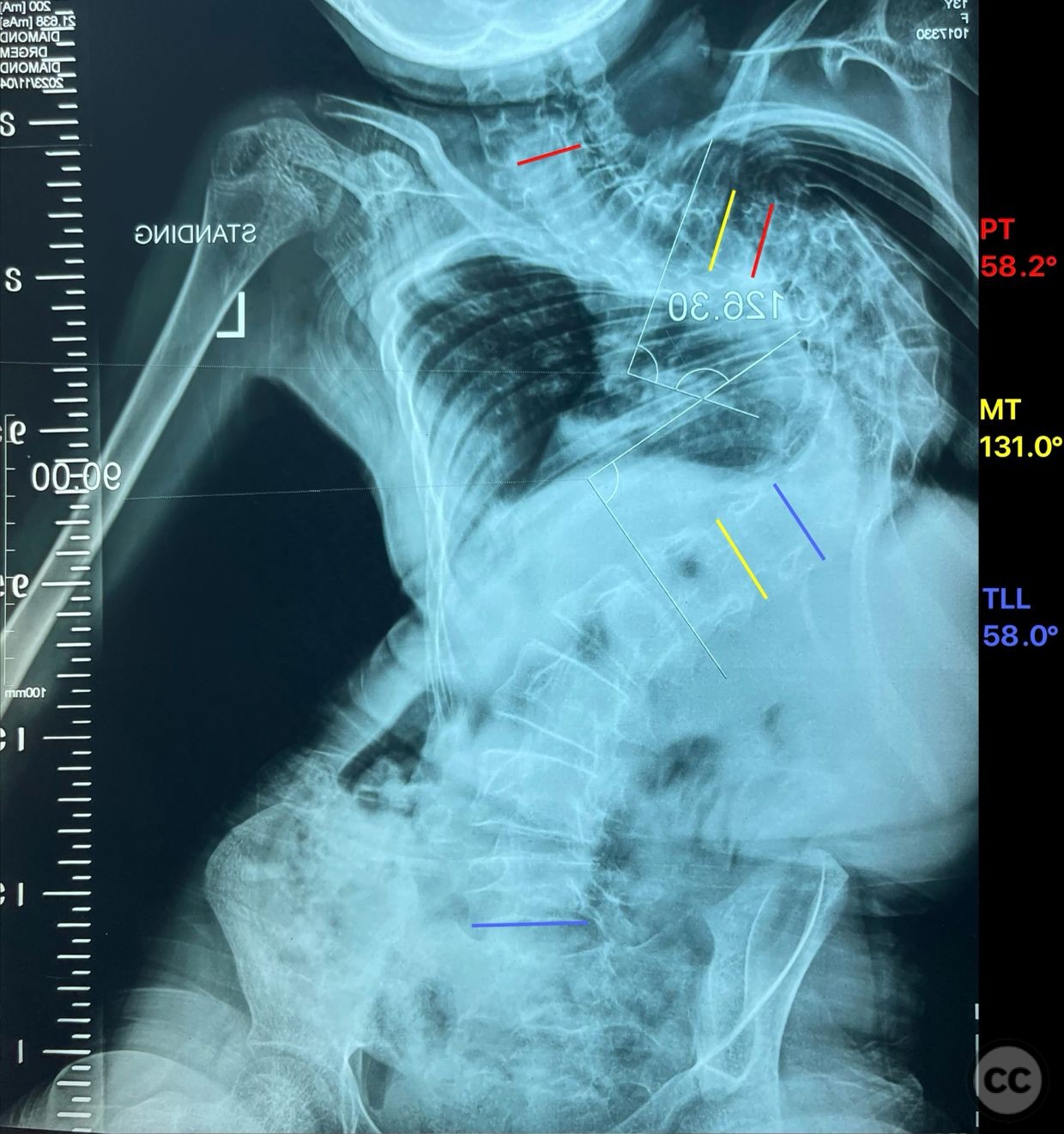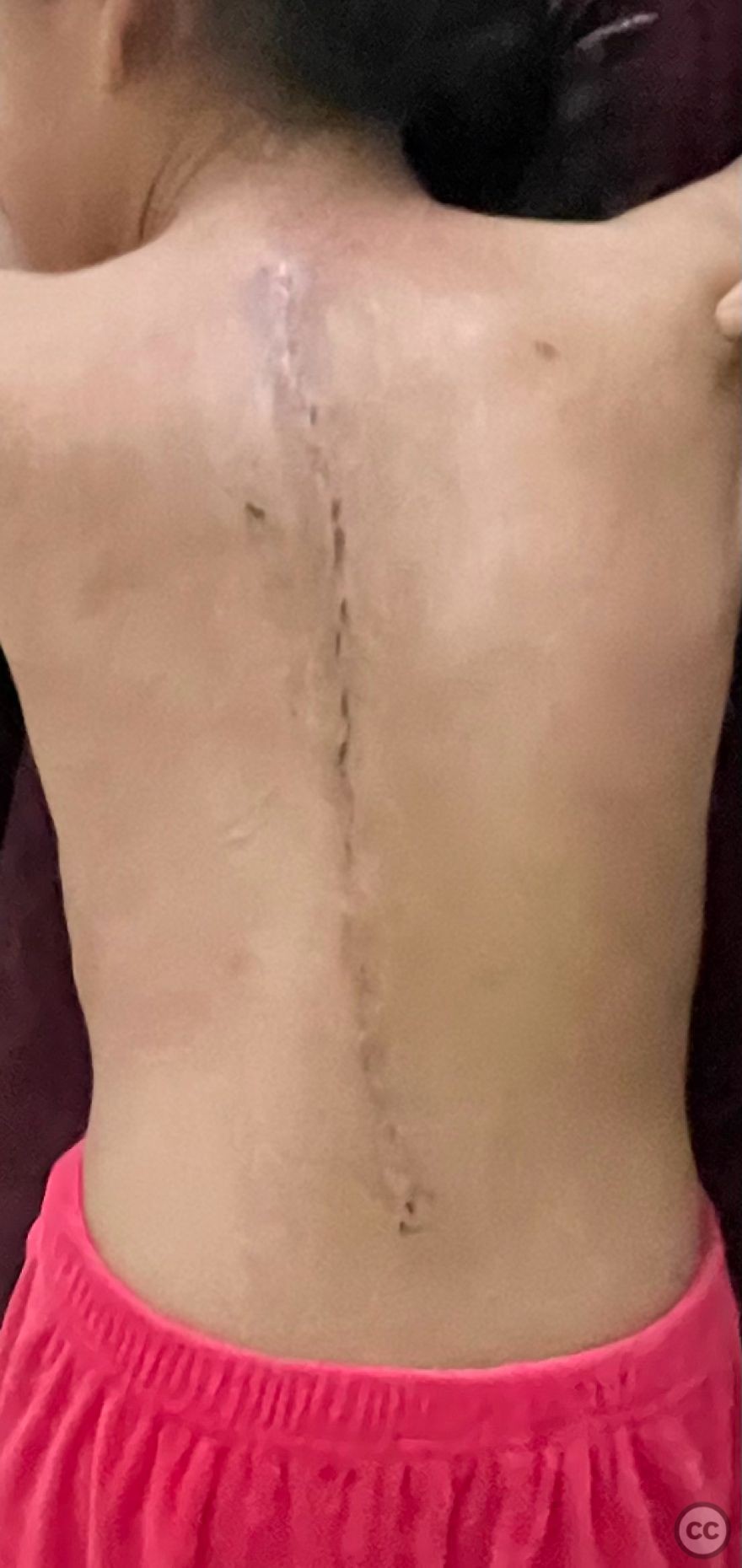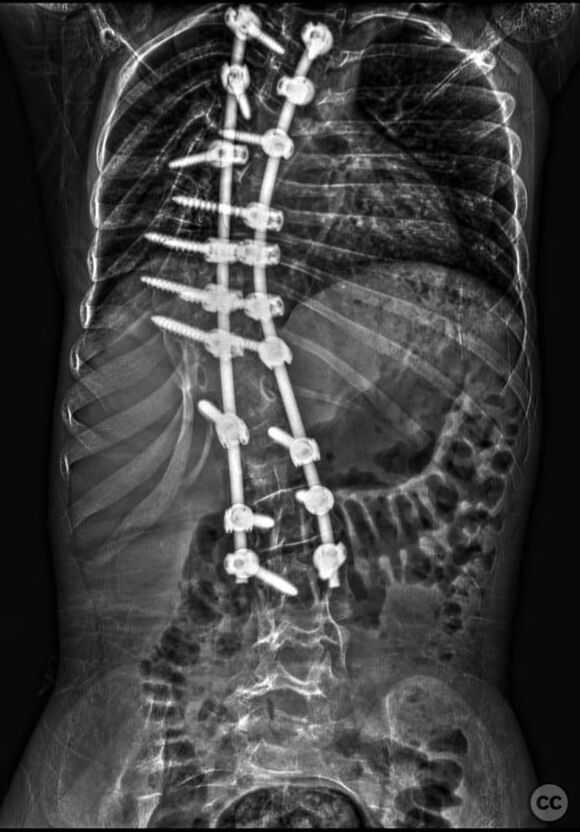Single Stage Posterior Spinal Fusion for Neuromuscular Scoliosis
Score and Comment on this Case
Clinical Details
Clinical and radiological findings: A 14-year-old female with cerebral palsy presented with severe, rigid neuromuscular scoliosis. The patient, a walker, exhibited significant curvature of the spine, compromising pulmonary function and balance. The complexity of the condition necessitated a decision between staged and single-stage surgical correction. Given the patient's limited cooperation, likely due to her underlying condition, a single-stage approach was selected.
Preoperative Plan
Planning remarks: The preoperative plan involved a single-stage posterior spinal fusion (PSF) with multiple Ponte osteotomies. This approach aimed at maximizing curve correction, restoring spinal balance, and preventing further progression of the deformity. The surgical team prepared for extensive instrumentation and fusion from the upper thoracic to the sacral spine.
Surgical Discussion
Patient positioning: The patient was positioned prone on a Jackson table, ensuring neutral alignment of the head, spine, and pelvis. Care was taken to support pressure points and maintain physiological curves of the spine.
Anatomical surgical approach: The surgical approach entailed a midline incision over the determined spinal levels. Subperiosteal dissection exposed the laminae, facets, and transverse processes. Multiple Ponte osteotomies were performed at predetermined levels to improve spinal flexibility and facilitate correction. Pedicle screws were inserted bilaterally along the fusion levels, followed by rod placement and curve correction through derotation and translation maneuvers.
Operative remarks:Intraoperatively, attention was paid to achieving maximal curve correction while preserving cord integrity, monitored through intraoperative neuromonitoring. The rigidity of the neuromuscular scoliosis posed challenges in mobilization; however, the multiple Ponte osteotomies allowed for significant flexibility enhancement. The fusion extended from the upper thoracic region to the sacrum to ensure comprehensive stabilization and prevent curve progression.
Postoperative protocol: Not Specified
Follow up: At 3 months postoperative follow-up, the patient demonstrated improvement in posture and balance, with a gain of 10 cm in height. The surgical intervention halted curve progression and alleviated pulmonary load, contributing to an enhanced quality of life.
Orthopaedic implants used: Originally posted on LinkedIn by Amr Elshewail
Author's Resources & References
Search for Related Literature
Industry Sponsership
contact us for advertising opportunities






Article viewed 598 times
12 Mar 2024
Add to Bookmarks
Full Citation
Cite this article:
LinkedIn. (2024). Single Stage Posterior Spinal Fusion for Neuromuscular Scoliosis. Journal of Orthopaedic Surgery and Traumatology. Case Report 10776496 Published Online Mar 12 2024.